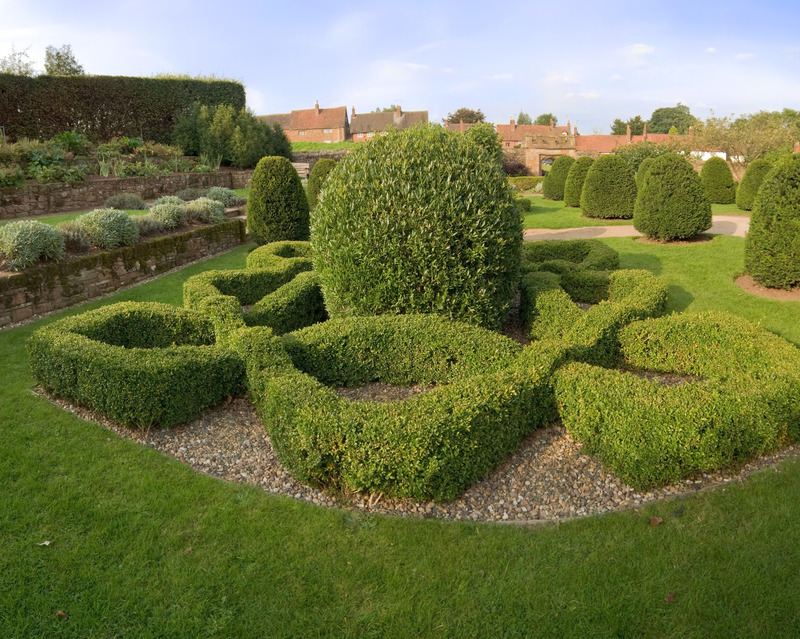Transforming Chaos: Blueprint for Garden Revival
Posted on 12/06/2025
Transforming Chaos: Blueprint for Garden Revival
Is your garden looking more like a jungle than a sanctuary? Many homeowners find themselves overwhelmed by overgrown lawns, unruly weeds, and neglected flower beds. But despair not! Whether you own a small urban plot or a spacious rural yard, reviving your chaotic garden is entirely achievable. In this comprehensive guide, we'll provide a step-by-step blueprint, blending practical steps with creative insights to help you transform chaos into an inviting, peaceful, and thriving outdoor space.
Why Garden Revival Matters
The significance of a well-maintained garden extends beyond mere aesthetics. Beyond the beauty of blooming flowers and manicured lawns, a revived garden offers:
- Psychological benefits - engage in mindful activity and enjoy a sense of accomplishment.
- Physical benefits - gardening can be a great workout and promotes physical well-being.
- Ecological advantages - revitalized gardens support local wildlife and pollinators.
- Increased property value - a beautiful garden enhances curb appeal and marketability.
With those reasons in mind, let's venture into the process of transforming your garden chaos into flourishing order!

Assessing the Starting Point: Chaos Unveiled
Conduct a Thorough Walkthrough
Before grabbing your tools, invest time in analyzing your current garden state. Bring a notebook or smartphone and take photos from multiple angles. Make note of:
- Areas with dense weeds or invasive species
- Dead or diseased plants
- Irrigation or drainage problems
- Shaded vs. sunny spots
- Soil condition and possible compaction
- Existing hardscape features (paths, patios, fences)
Understanding your garden's strengths and weaknesses is crucial for an efficient revival plan.
Planning Your Garden Revival: The Blueprint
Setting Realistic Goals
Every successful garden restoration project begins with clear, achievable objectives. Ask yourself:
- Do you want a vegetable patch, a flower garden, or low-maintenance landscaping?
- Are you reviving the entire garden, or focusing on specific sections?
- What's your timeline and budget?
- How much time can you dedicate weekly to upkeep?
Write down your goals. Prioritize them so you can phase your revival if needed.
Gather Tools and Materials
Equipping yourself with the right tools prevents frustration and improves efficiency. For most garden transformations, you'll need:
- Gardening gloves and sturdy boots
- Spades, forks, and trowels
- Pruning shears and loppers
- Rake and leaf blower
- Wheelbarrow
- Compost bin or yard waste bags
- Mulch, compost, and soil amendments
- Seeds or young plants for later stages
From Chaos to Order: The Step-by-Step Revival Process
1. Clear Out the Clutter
- Remove any garden debris - fallen branches, dead leaves, old pots, and garden ornaments.
- Prune back overgrown shrubs and trees to reclaim space and sunlight.
- Pull up weeds--roots and all--to prevent regrowth. Use a pointed hoe for persistent weeds.
- Dispose of diseased plants separately to avoid spreading pathogens.
The first cleanup may be exhausting, but this is the foundation of any successful garden revival.
2. Assess and Improve Soil Quality
A revived garden starts underground. Great soil is the backbone of healthy, beautiful landscapes. Here's how to restore it:
- Test soil pH and fertility with a basic kit from your local garden center.
- Remove stones or debris unearthed during cleanup.
- Loosen compacted soils by digging or rototilling to improve drainage and aeration.
- Add organic matter, such as compost or aged manure, to replenish nutrients and structure.
- If your garden has drainage issues, consider adding sand or organic matter to improve water movement.
Healthy, revitalized soil sets the stage for everything that follows in your garden transformation.
3. Define Garden Spaces and Boundaries
To create order from chaos, establish distinct beds and pathways. This not only improves aesthetics but also maintenance:
- Create clear borders with edging materials like stones, bricks, or recycled plastic.
- Design meandering or straight paths with gravel, stepping stones, or bark mulch.
- Plan beds based on sun exposure, moisture, and intended use (flowers, veggies, herbs).
Defined spaces guide planting and make continual upkeep significantly easier.
4. Select the Right Plants: A Revival Essential
Revived gardens radiate with the right selection of plants, suited to your particular climate, soil, and light conditions. Consider:
- Native species - these support local wildlife and typically require less maintenance.
- Perennials for low-maintenance color throughout the year.
- Annuals for quick, vibrant splashes of color.
- Evergreens and shrubs for year-round structure.
- Vegetables and herbs if you favor edible landscaping.
Group plants with similar requirements together to maximize results and reduce ongoing effort.
5. Planting with Purpose
Don't just stick plants in the ground; strategize your plantings for maximum impact and longevity:
- Follow recommended spacing to prevent overcrowding.
- Mix heights and textures for visual interest.
- Place tall plants toward the back (or center in round beds), shorter ones upfront.
- Add groundcovers to suppress weeds and reduce soil erosion.
Reviving your garden is as much about thoughtful placement as plant selection.
6. Mulch and Water Wisely
After planting, step up your garden's defenses against chaos:
- Spread mulch (bark, straw, or compost) around plants to retain moisture and block weeds.
- Water deeply after planting, then establish a regular schedule suited to your region's rainfall and climate.
- Consider installing drip irrigation or soaker hoses for efficiency and water conservation.
Mulching and proper watering are simple but powerful steps in your garden revival blueprint.
7. Maintain and Monitor
The most beautiful gardens are built on consistency. To ensure your transformation endures:
- Weed regularly, particularly after rain.
- Deadhead blooms and prune as needed to encourage growth and shape.
- Monitor for pests, but use natural remedies where possible to protect pollinators.
- Replenish mulch annually.
- Feed plants with compost tea or organic fertilizers as needed.
A revived garden is an ongoing relationship between you and your landscape.
Adding Character: Beyond the Basics
Incorporate Hardscaping and Art
Once order is restored, elevate your garden's character:
- Install raised beds for vegetables or cut flowers.
- Add seating areas - benches, hammocks, or bistro sets for relaxation.
- Use trellises, arbours, or obelisks for vertical interest and support climbing plants.
- Integrate garden art - sculptures, birdbaths, or wind chimes for personality.
Encourage Wildlife
Transform your revived garden into a haven for useful wildlife by:
- Planting nectar-rich flowers for bees and butterflies.
- Installing bird feeders, baths, or nesting boxes.
- Building small log piles for beetles and hedgehogs.
Wildlife brings vitality and balance to your renewed garden space.
Eco-Friendly and Sustainable Gardening Practices
Sustainability is a natural extension of the garden revival journey. Consider these tips:
- Collect rainwater with a barrel to reduce freshwater consumption.
- Compost garden clippings, leaves, and kitchen waste to feed your revived soil.
- Favor organic fertilizers and pest control methods.
- Choose drought-tolerant varieties if you live in an arid region.
Inspiration: Transforming Real Garden Chaos
Case Study: Suburban Garden Makeover
Jane's garden in the UK had become completely overrun. Brambles, nettles, and weeds choked out every last trace of her old flower beds, and a broken fence lent an air of abandonment. Using a revival blueprint:
- Jane spent the first weekend clearing debris and pruning back invasive plants.
- She tested her soil and discovered compaction and acidity, so she double-dug and added lime and compost.
- After defining her borders, she planted bee-friendly perennials and sowed grass seed in cleared areas.
- She created a cozy seating nook and added a bird bath for wildlife.
With consistent weeding and watering, by the end of the summer Jane's revived garden was the envy of the street!
Maintaining a Revived Garden: Tips for the Long Haul
- Set a routine - dedicate 10-20 minutes a day or an hour every weekend.
- Stay vigilant: catch weeds early before they spread.
- Rotate annual plants and replenish amendments to keep soil healthy.
- Prune regularly to maintain shape and encourage blooms.
- Document progress with photos or a journal for motivation.

Garden Revival Blueprint Checklist
- Walkthrough and evaluation
- Set goals and budget
- Gather tools and materials
- Major clean-out and weed removal
- Soil improvement and amendments
- Defining beds and paths
- Select and plant appropriate species
- Mulch and initial watering
- Introduce character features and wildlife habitats
- Sustainable maintenance plan
Conclusion: Celebrate Your Garden Renaissance
Transforming garden chaos into beauty is a deeply rewarding journey. Armed with a clear blueprint, patience, and a little creativity, anyone can rejuvenate even the wildest outdoor space. Remember: start small if needed, focus on steady progress, and enjoy the process. Over time, your revived garden will blossom, offering you a peaceful retreat and a living testament to your dedication. *Embrace the challenge, nurture your green space, and watch as it's transformed from chaos into your very own garden paradise.*
Now is the ideal moment to begin your garden revival. With these actionable steps, let your outdoor transformation commence and reap the many rewards for years to come!

